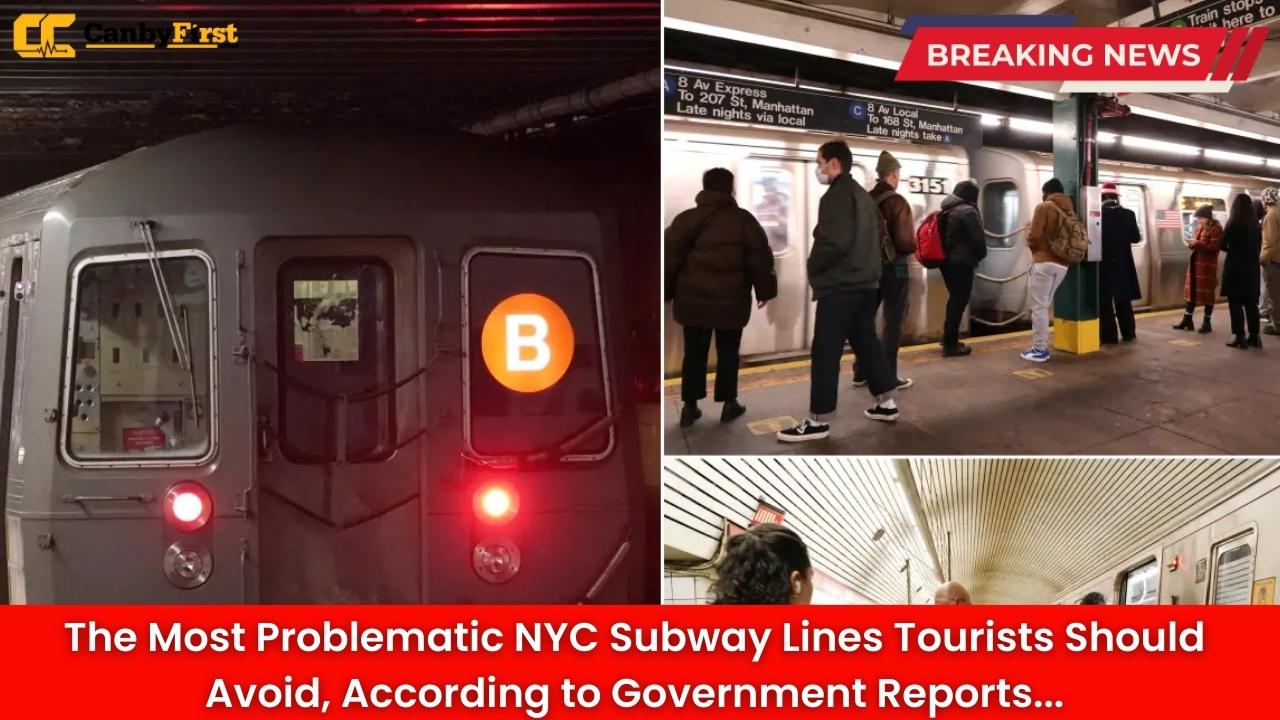New York, US: New York City’s subway system is one of the busiest in the world, carrying millions of riders every single day. For locals, it’s an essential part of daily life. But for tourists, navigating the maze of trains, platforms, and tunnels can be intimidating—especially when certain lines have developed reputations for being unreliable, overcrowded, or plagued by delays. Recent government reports shed light on the subway routes most frequently criticized, and experts warn visitors to think twice before stepping on these particular lines.
Trouble Beneath the City
The Metropolitan Transportation Authority (MTA) oversees a vast network of 472 stations and 665 miles of track. While improvements have been made in recent years, several lines regularly experience chronic issues like signal failures, train shortages, and track repairs. For tourists who want smooth travels between attractions like Times Square, Central Park, or the Brooklyn Bridge, these problem routes can turn an exciting day into hours of frustration underground.
The Worst-Ranked Subway Lines
According to the reports, five subway lines stand out for their reliability problems.
Also Read
-
The A Line
Stretching from Inwood in Manhattan to Far Rockaway in Queens, this is one of the longest routes in the system. Tourists hoping to take it to JFK Airport often face overcrowding, long gaps between trains, and frequent delays. Its length, combined with aging infrastructure, makes it particularly vulnerable to disruptions. -
The C Line
Running mostly alongside the A line, the C train is notorious for its older train cars and limited frequency. Visitors using this line to reach popular landmarks such as the Museum of Natural History often complain about long waits and sudden service suspensions. -
The B Line
Operating only on weekdays and not late at night, the B train often confuses tourists who expect it to run all hours. It has been cited for unreliable rush-hour service and sporadic breakdowns, making it an inconvenient choice for travelers unfamiliar with transit patterns. -
The 7 Line
Known as the route to Citi Field and Flushing Meadows, where the U.S. Open is held, the 7 train also connects directly to Grand Central Terminal. While immensely popular, it has been frequently criticized for overcrowding and construction-related delays. For out-of-towners, this can mean standing shoulder-to-shoulder for long commutes. -
The R Line
Serving key stops in Manhattan, Brooklyn, and Queens, the R train is often among the slowest in the system. Reports highlight its tendency for delays, inconsistent schedules, and difficulty maintaining service during maintenance. Tourists relying on it between lower Manhattan attractions may face unexpected headaches.
Safety Concerns for Visitors
Beyond delays, these subway lines have been flagged for higher-than-average incident reports involving stalled cars or overcrowded platforms. While the subway overall is safe by big-city standards, tourists unfamiliar with the system are at risk of getting stuck on platforms for long periods during breakdowns. Advocacy groups have urged the city to prioritize modernizing aging train cars and signaling systems on these routes.
Alternatives for Tourists
For those visiting New York, experts recommend using more reliable lines like the 1, Q, and E trains, which regularly receive better marks for service consistency. In addition, tourists can take advantage of city buses, ride-sharing apps, or even ferry services for scenic alternatives to stressful commutes. Walking may also be more practical in Manhattan, where many attractions are within close distance.
The City’s Response
Officials at the MTA say they are aware of the challenges and are working on upgrades, including new digital signaling and cleaner, faster trains. Billions have been earmarked for infrastructure improvements, but experts stress that the work is long-term and disruptions will continue in the short run. The city encourages tourists to check updated transit apps for real-time information before setting out on their journeys.
What Tourists Should Know
Navigating the New York City subway can be an essential part of the authentic local experience, but knowing which lines to avoid is key to a smoother trip. With government data pointing to the A, C, B, 7, and R trains as the biggest culprits of delay and breakdowns, visitors are advised to plan ahead, allow extra time, and be flexible with travel options.
FAQ
Which subway line is the most problematic for tourists?
Government reports highlight the A line as one of the longest and most frequently delayed routes.
Can tourists rely on the 7 train?
Yes, but they should expect large crowds during peak hours and possible delays due to ongoing maintenance.
Are there safer or more reliable alternatives to these lines?
The 1, Q, and E trains are generally considered more reliable and less prone to major disruptions.
Is the subway still worth taking for tourists?
Absolutely. Despite problems on certain lines, the subway is fast, affordable, and the most iconic way to see New York.
What can tourists do to avoid subway headaches?
Plan ahead using transit apps, avoid rush-hour crowds, and stay informed about system alerts before traveling.












